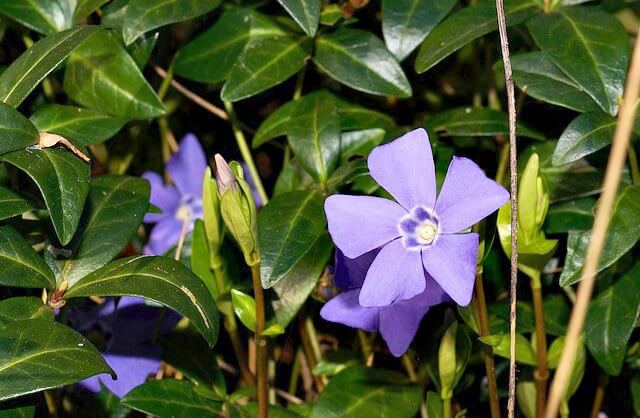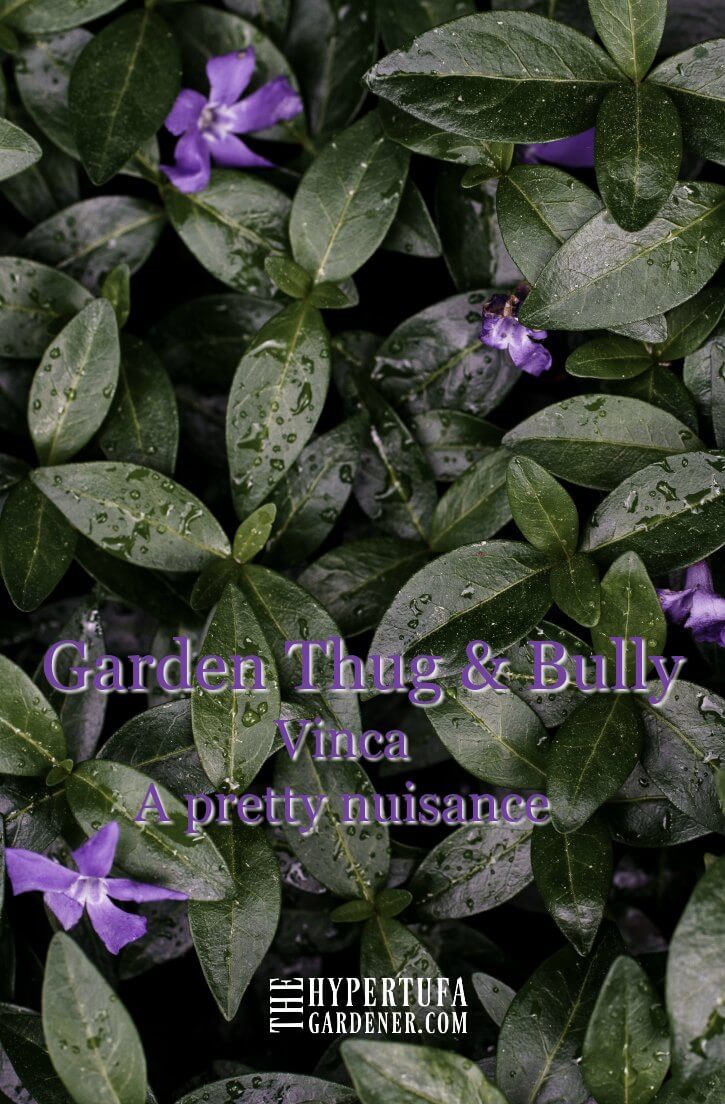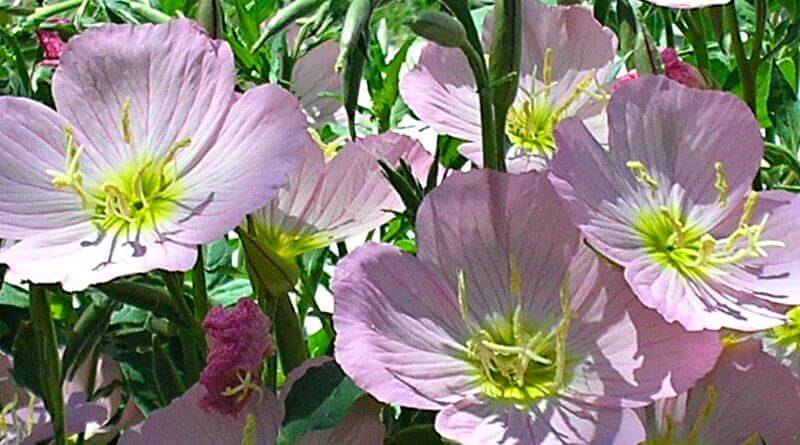3 Top Thugs And Bullies in the Garden
There are some plants that multiply freely………..too freely.
I am speaking of some pretty flowers or foliage plants which are very nice plants, pretty flowers wonderful to see. Some plants seem very nice the first year and do really well. It seems you have found a plant that will really enhance your garden.
……at first.
But then when the fall comes around, you think ” Wow, that (insert your thug plant here) really has grown..”
Here are Three Top Thugs and Bullies in my garden.
Periwinkle or vinca minor is a pretty vining plant. It is a lovely dark green leaf on a strong sturdy vine (very sturdy-you’ll see what I mean when you are trying to yank it out!) and in the spring it blooms with pretty blue flowers, and the flowers recur sporadically through the year.
[su_note note_color=”#cfcffb” radius=”15″]There is an annual plant called Madagascar periwinkle ((Catharanthus roseus) which is a pretty bloomer, not the vining plant that is vinca minor. That one is seen in baskets and bedding plants and is well-behaved all year.[/su_note]

But my garden apparently was a great match for vinca’s needs and it took off. I had large creeping mats growing all across the garden, into everything. I pulled and dug and removed, but it just grew back…more and more and more.
Each of those vines will touch down and root at each little node, and Wow, they are strong. Roots are up to two feet down into your soil. As I understand , any small piece of root or branch will just start growing again.

Long story short: after years of dealing with vinca, we rented a walk-behind Toro Dingo with a scoop and skimmed off the bed of vinca, separated the plants I wanted, and brought in new soil, and replanted my desirable plants.
Moral of the story: Don’t plant vinca in your garden. Leave it only for erosion control “way over there.” My opinion only.
Mexican Evening Primrose (Oenothera berlandieri) and its cousin Yellow Sundrops or Missouri Evening Primrose (Oenothera macrocarpa)
First of all, I still have the yellow variety in my garden. It is a prettier plant in my opinion overall, though it is a rampant, aggressive grower. Both are, but I will tolerate those bright yellow flowers since they can be kept under control.

The pink variety is a BEAUTIFUL flower, let me say that. And the foliage starts out pretty, but changes to a weird-forked-splayed-out plant and I don’t like that look. And of course, it grows all over the place, more and more and can cover your whole garden if not pulled and pulled and roots sifted out.
I learned my lesson well on this one. It is a devil-weed to me. If it is one you like, get a packet of seeds cheap, and try it in a pot. Maybe you will see the devil-weed emerge and then make your decision before you are hand-pulling a 1/2 acre of this stuff!

The yellow Oenothera macrocarpa is a taller stand-up plant and it is pretty and yellow and the blooms last for a long time. When it finishes, you can cut it to the ground and more will always come back so it is a manageable Thug & Bully. It will be spreading over your whole garden in a few years if you allow this.
But you can easily pull it from the ground (shallow roots). I do that. If you have a whole drift of it ( and it will get wider and wider), you can mow it off after blooming, they will come back.

So Beware of these! Pink ones, NO! Yellow ones, YES… but keep under control
My final plant for today (because I could go on and on) is the cute leafy little ground cover called Ground Elder, Bishop’s Weed, Goutweed, or Snow-on-the-Mountain (Aegopodium podagraria). I accidentally carried this in on a potted plant given to me by another gardener.
It was a hitchhiker in the pot and neither of us noticed it. I had known of this Thug & Bully before so if I had seen it, I could have separated it initially and saved a lot of back-breaking work.

Snow-on-the-Mountain plants are a pleasant looking variegated green and white and quite pretty in the spring. But it multiplies and weaves all through your garden….everywhere! It will choke out your other plants and overwhelm them because its roots underground are a network of rhizomes and strands that choke everything in its path.
The plant grows a spindly ugly flower which is nothing to see, and the leaves invariably gets a fungus or something which makes all the leaves get brown spots through the summer. Believe me, it is so tacky and ratty looking that you will regret putting it in your garden.
What can you do to remove them?
Hours on your hands and knees, pulling and digging, and pulling and digging, because every tiny piece of this root will grow again! You have to sift your soil for about a foot down and get every piece you can out! You will need to do this over several days to try and be sure you get EVERY one.

Unfortunately, you will need to keep a strict watch for the next few seasons and watch for a tiny regrowth of the green and white plant. Pull it and dig down deep again to be sure you get the full root. That is the only way you get rid of it
Always check your pots brought into your garden, either from friends or a nursery, for HITCHHIKERS. If you see one,pull it up and out, then rinse the roots of your desired plant and DON’T LET THE BAD ONES IN!

Don’t compost these garden thugs! They will SURVIVE. You will spread them around again! Arrgghh!
There are other plants that I have had problems with, such as Obedient Plant, catmint, forget-me-nots, etc. But none are as bad as these top three.
So what Garden Thugs and Bullies have you had to deal with?
I advise when you want to plant something, Google “How to get rid of _______.” Let it at least warn you!


